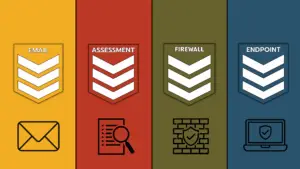 Money management, from the consumer viewpoint, will be undergoing significant changes over the next few years. An important part of this change will be in the area of personal information security and customer convenience. Biometrics, a technology that involves things such as fingerprint and retinal identification, will become increasingly-common methods for accessing account information and conducting basic banking activities.
Money management, from the consumer viewpoint, will be undergoing significant changes over the next few years. An important part of this change will be in the area of personal information security and customer convenience. Biometrics, a technology that involves things such as fingerprint and retinal identification, will become increasingly-common methods for accessing account information and conducting basic banking activities.
This is evident in some sectors of business already: fingerprint identification is used in conducting sales transactions and wearable devices are being used to uniquely identify customers. Even in the workplace, wearable technology is seen as a productivity-boosting tool by younger workers. Expanding biometrics use to everyday banking and shopping transactions is will lead to an easier and faster way to do things.
This means that the future of money management is going to be a me-oriented change for the consumer and profit-oriented change for banks and businesses. Though there will still be a need for bank tellers, their numbers will be considerably reduced from the present level. This will reduce the cost of operations for businesses and banks alike.
For those who prefer a non-digital world when it comes to technology, paper money will still be around for the foreseeable future. One reason is its universal acceptance. Digital transactions may still be suspect to some degree, but paper is a tangible asset with which consumers will always be familiar.
On the subject of paper, the check has been dying out and is expected to completely disappear within a few years. The reason is obvious. For businesses and banks, handling checks costs money. For the individual consumer, checks are time consuming and difficult to manage. Banks have bumped up the cost of printing checks, in part to discourage their use. It is hard to make an argument for keeping checks as a way to handle money.
With all these coming changes, what will money actually mean to the average person when the majority of the time they will never actually see the paper which the numbers in their accounts represent? Images of stacks of money have been a historical representation of wealth. The coming changes will morph those stacks of money into stacks of ones and zeroes. It may be a sentimental perspective, but the idea of wealth appears to be changing along with the way money will be handled.
None of these changes are possible without the Internet, which makes online banking and microloans possible. In fact, the future of loans in general is said to rest with the Internet. Many people and businesses have found that skirting the paperwork nightmare that accompanies traditional loans from financial institutions can be done through Internet loan sites. P2P, or person to person, loans are increasing in popularity and avoid many of the high-interest payday loans that are still a resource to cash-strapped people who need a quick and easy loan.
The future of money management will be primarily digital and, optimistically, more secure. Your personal information and transactions will be connected to you as a person, rather than a signature or PIN code, through biometrics. It will not take days to see your money deposited in your bank account, but minutes, thanks to emerging financial technology. You will interact more with machines and devices than people. For those who are nostalgic, paper money will still be around.
Check books and loose change can be things of the past, and your money management will be orderly and summarized by your bank or retail store because of emerging technology. These changes will require some changes from us, but this is one of those situations in which the advantages heavily outweigh the yearning for the good old days.




